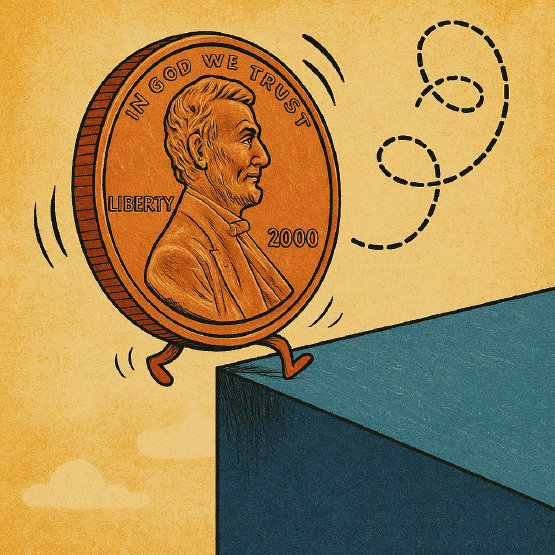1 cent coin, the disappearing small currency leaves a question
Impact of Digital Innovation and Technological Advancement
Today's world is undergoing significant changes in lifestyle amid rapid advancements in digital innovation and technology. These changes are progressing in various areas, reducing the role of physical assets and strengthening intangible systems, reaching as far as finance, retail, and consumer structures. In particular, the phenomenon of the disappearance of small change, especially the one-cent coin, which was once familiar in everyday life, allows for several reflections not only on economic issues but also on social and cultural aspects.
The History and Significance of the 1-Cent Coin
The 1-cent coin is a unit of currency that was created when the United States began issuing its own currency after gaining independence in 1793. It has served as a part of everyday transactions for a long time. Although it is a small denomination, its high usage frequency and its practical role in forming the minimum unit of transactions have made it an institutional tool with functionality beyond just a simple symbol. Additionally, its connection to the livelihood of workers or the lower class within the economic structure of certain eras gives us insight into the role this coin has played in real life.
The spread of digital payments and the crisis of the one-cent coin
In recent decades, the proliferation of mobile payments, cashless transaction systems, and digital financial platforms has raised questions about the very utility of small denominations of currency. From the perspective of transaction efficiency and cost reduction, digital payments clearly offer advantages, and in fact, many countries are rapidly decreasing their usage of physical currency. In this changing environment, the one-cent coin faces criticism for its low circulation utility compared to its maintenance costs. Some are considering the abolition of currency denominations or have already put such measures into practice.
Social Inequality and the Issues of Digital Payments
The changes resulting from technological advancements can be naturally accepted, but at the same time, there is a need to consider the accompanying social structural changes. In particular, the widespread use of digital payments benefits those who have access to accounts, possess the ability to utilize smart devices, and have access to a certain level of network infrastructure. Conversely, it can lead to exclusion from financial activities for those who do not have such access. The elderly, low-income individuals, or residents in specific regions are classified as digitally marginalized groups, which can ultimately contribute to the deepening of social gaps.
Symbolic Value of the One-Cent Coin and the Future of Currency
In this context, there is a perspective that the function of the one-cent coin goes beyond a simple economic unit to symbolize universality and inclusiveness. Physical currency, which is accessible to everyone equally, possesses characteristics that differ from digital systems where opportunities vary depending on technological levels. Therefore, rather than interpreting the phenomenon of the physical legacy of currency disappearing solely through the lens of technological advancement, it is essential to discuss the underlying social context and issues of institutional balance together.
Continuous Evaluation of Digitalization and Social Equity
It is highly likely that digitalization will continue in various forms in the future. Therefore, what is important is the ongoing assessment and inspection of who this change impacts rather than the direction of the change itself. For example, if supplementary measures for low-income groups or those with limited access to information—such as local micro-transaction infrastructure and offline payment integration—are not implemented alongside digital payments, the structure may become entrenched where efficiency increases but equity decreases.
The Meaning of Currency and Social Choice
The disappearance of the one-cent coin can be seen not merely as a phenomenon of a currency vanishing, but as a case of how society will adjust the balance between technology and systems. It can serve as an opportunity to reconsider what social conditions should ultimately accompany advancements in technology and economic efficiency. Currency can hold meanings that go beyond a simple medium of exchange, and these meanings are constantly readjusted within the context of time and society. How the process of change is understood and responded to ultimately depends on the choices made by society as a whole.

Post a Comment